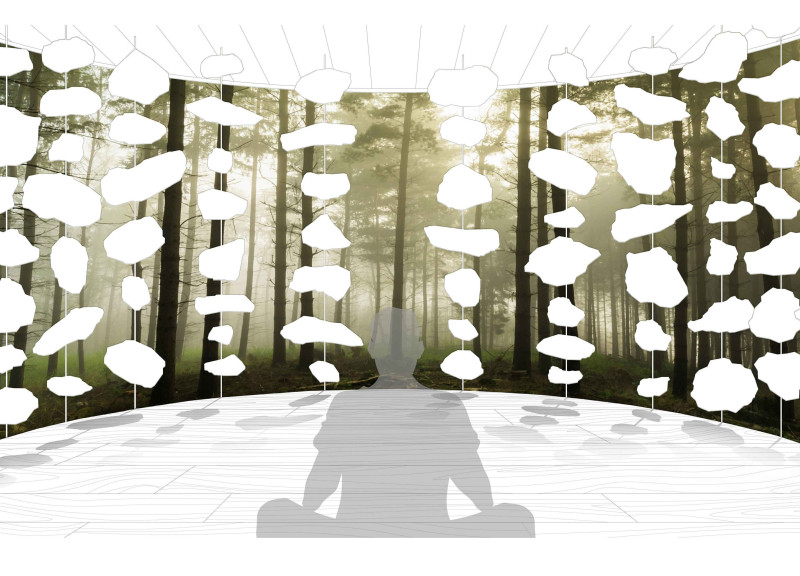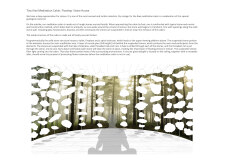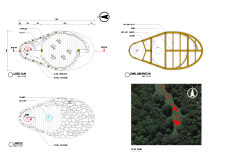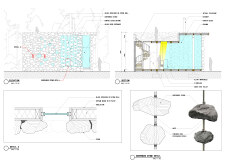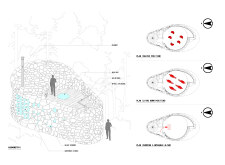5 key facts about this project
The Tiny Kiwi Meditation Cabin, also known as the Floating-Stone House, serves as a peaceful retreat aimed at meditation and reflection. It is set in a tranquil natural environment that enhances the experience of mindfulness. The design focuses on creating a close relationship between the building and its surroundings. The shape of the cabin is circular, promoting a sense of calm and unity.
Concept and Form
The overall design of the cabin revolves around its circular shape, which allows for easy movement within the space. When approaching, visitors first see a sturdy wall made of stone and mortar, resembling traditional building techniques. As one walks around the cabin, openings gradually show glass windows, welcoming light into the interior and creating a connection between the outside landscape and indoor environment.
Structure and Functionality
Within the cabin, locally sourced timber is used to complement the external stone. The solid stone base contains important features such as a toilet, a fireplace, and a spiral staircase that leads to an upper viewing platform. This thoughtful arrangement of elements ensures comfort and practicality while still allowing for moments of solitude and concentration.
Floating Stone Elements
Important to the design are the suspended stones that create the visual impression of floating. Each stone is held in place by stainless-steel threaded rods, which are drilled through the stones to provide support. This method allows light to shine through while offering views of the natural surroundings. The visual interplay between the stones and light enhances the sensory experience of the cabin.
Light and Ambiance
The design includes a layer of curved glass positioned behind the suspended stones. This serves to protect the interior from rain and wind but still lets in plenty of natural light. A circular glass skylight situated above brings dynamic views of the sky and encourages interaction with the outside world. This feature deepens the overall experience of being in the space, inviting occupants to engage more fully with the environment around them.


